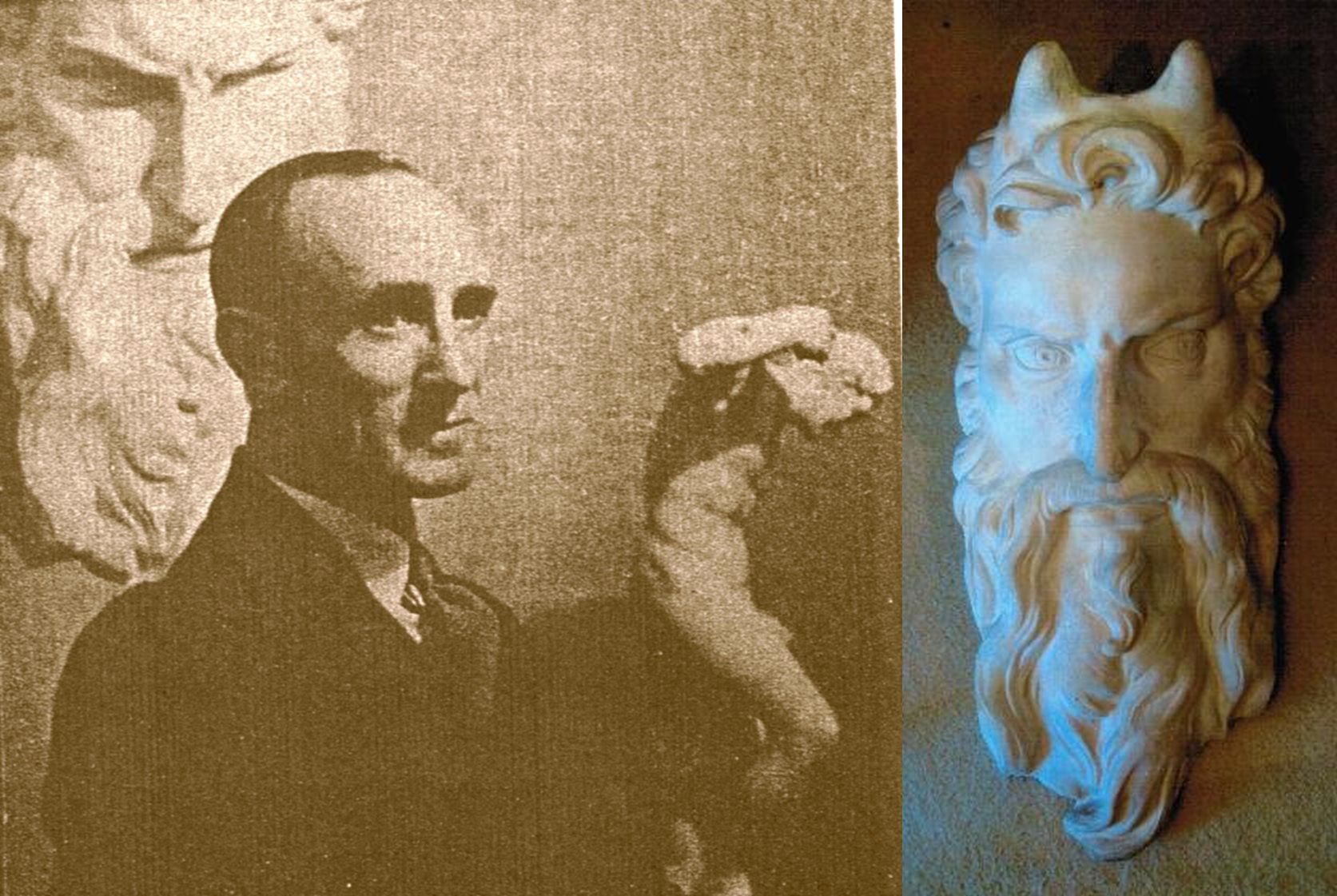Francis Samuel "Frank" DAVIS [16770]
- Born: 31 Oct 1890, Ascot Vale Victoria AUS
- Marriage (1): Alma GOODE [16769] on 21 Dec 1912
- Died: 7 Aug 1979, Launceston Tasmania aged 88
- Buried: 9 Aug 1979, Hawkesbury Cemetery Wilberforce NSW

 General Notes: General Notes:
Frank Davis was an artist and designing electrical engineer who designed the original electrical lights (but not the earlier gas lights) on the Sydney Harbour Bridge. He ran art classes at the Railway Institute, connected with Sydney's Central Railway Station in the 1930s to 1950s. He was part of a friendly circle of Sydney artists that included the oil painter, Arthur Murch, who attended his funeral in 1979 at St. John's Anglican Church Wilberforce, and he is buried with his wife at Hawkesbury Council cemetery in Wilberforce immediately behind St. John's Church.
Ref: Gavin McGrath 2016
"Holy Moses."
Plaster caste from the collection of Australian artist,
Francis (Frank) S. Davis (1890-1979).
Given to his daughter, Mrs. Betty McGrath; then given to her son, Mr. Gavin McGrath.
Mr. Frank Davis's funeral in 1979 was at St. John's Anglican Church Wilberforce, and he is buried with his wife, Alma Davis, at Hawkesbury Council cemetery in Wilberforce immediately behind St. John's Church, Wilberforce, in western Sydney. He was a designing electrical engineer who, for example, designed the original electrical lights (but not the earlier gas lights) on the Sydney Harbour Bridge. In artwork he was mainly a watercolourist. In the 1930s to 1950s he ran weekly art classes on Tuesday night at the Railway Institute, connected with Sydney's Central Railway Station; and on Saturdays he taught, for example, water colour classes in landscape painting, or still life, for instance, flowers in a vase - mainly roses, which he used to paint after growing them at his residence in Hopetoun Avenue, Mosman. This plaster caste of Moses' head is c. 31 inches or 79 centremetres long, and c. 14" or 36 cm wide, and is impressionistically based around, but not the same as, Michelangelo's Moses. Thus whereas Michelangelo's full body sculpture of Moses has his beard off to the right and eyes looking to the left, by contrast, this plaster caste uses artistic license to have Moses' beard straight and his eyes looking straight ahead, as an adaptation for a head plaster caste to be hung on a wall. In the Bible "horns" are sometimes used as symbols of strength or power, thus in Daniel 8:20 "two horns are kings of Media and Persia," or in Revelation 17:12, "the ten horns … are ten kings." In Deuteronomy 33:16 & 17, reference is made to "the head of" the patriarch, "Joseph," "and his horns are like the horns of unicorns: with them he shall push the people together to the ends of the earth," i.e., Joseph's "horns" are a poetical or figurative way of saying that he is very strong. "Horns" can be used in this figurative tradition for the strength of either good or bad powers, and so both are referred to in Psalm 75:7 & 10 where "God is the judge," "All the horns of the wicked also will I cut off; but the horns of the righteous shall be exalted." Exodus 34:29 in the Latin Vulgate of Saint Jerome (died 420), says that "when Moses came down from Mount Sinai" with "the two tables" of The Ten Commandments (Exodus 20:1-17 & Deuteronomy 5:6-21), Latin, "cornuta (horned) esset ('it was' = 'was') facies (face) sua (his)," meaning, "his face was horned" i.e., with beams of light or "horns." Thus in a Western Christian artistic tradition that preceded the time of Michelangelo (1475-1564) and his sculpture of a horned Moses (c. 1513-1515), Moses was sometimes artistically depicted as having "horns," as here seen in this plaster caste made from pouring plaster into a sculptured mould. The reredos in the Anglican St. Andrew's Cathedral, Sydney, likewise depicts a horned Moses.
Ref: Gavin McGrath 2016
 Research Notes: Research Notes:
Image courtesy book Life & Times of John Brabyn by Betty McGrath 1995

Frank married Alma GOODE [16769] [MRIN: 6011], daughter of Alfred GOODE [14498] and Sarah Jane GAGGIN [14497], on 21 Dec 1912. (Alma GOODE [16769] was born on 16 Jan 1890 in Carlton Victoria AUS, died on 29 Oct 1986 in Launceston Tasmania and was buried on 31 Oct 1986 in Hawkesbury Cemetery Wilberforce NSW.)
|

 General Notes:
General Notes: